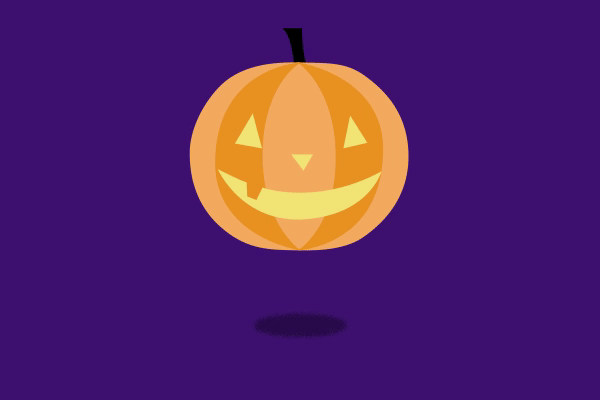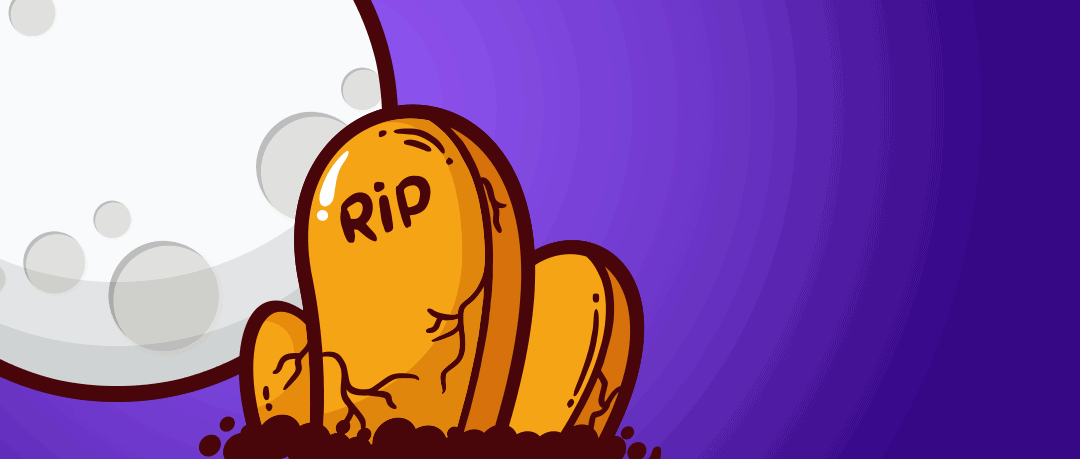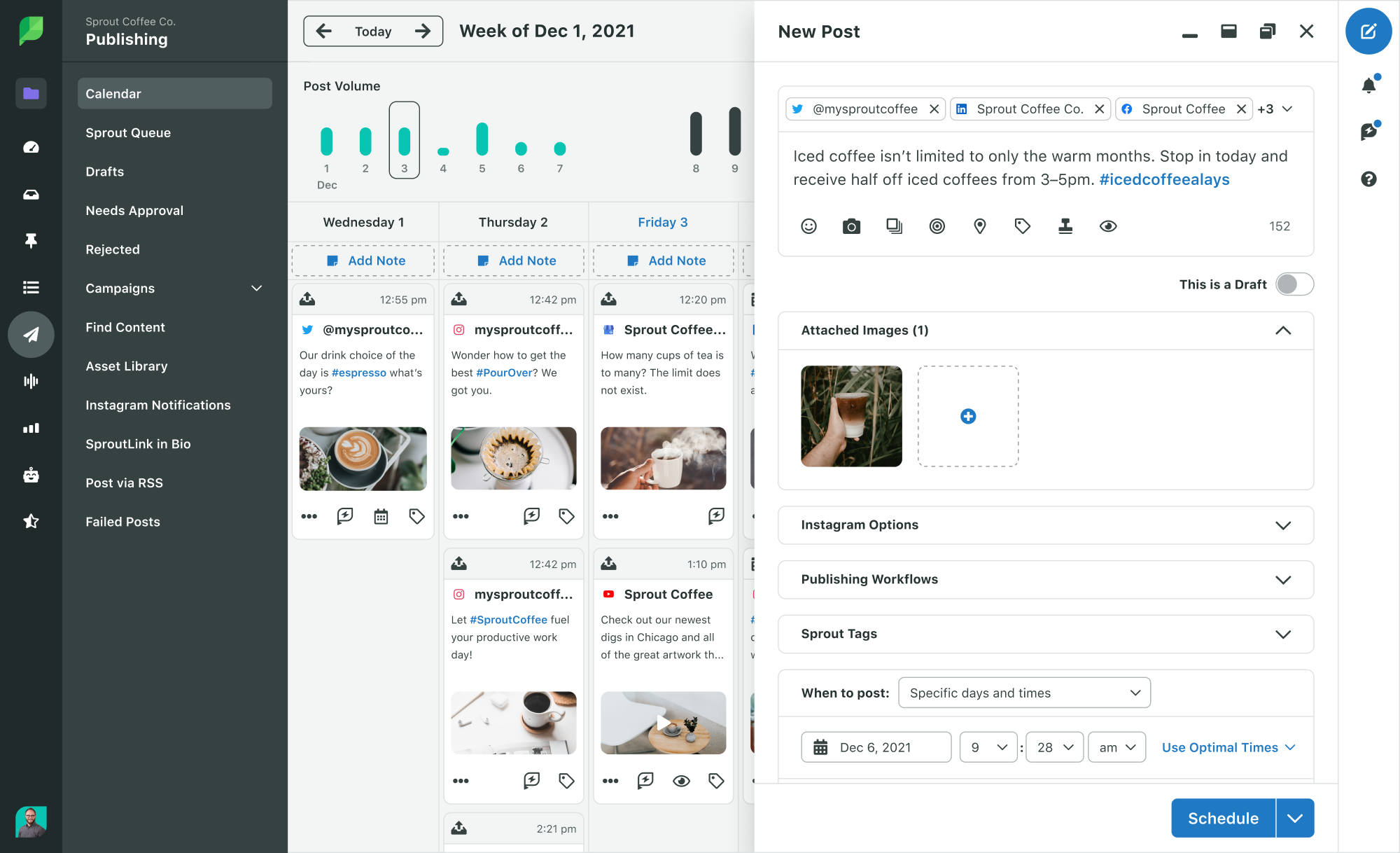Andrew Content
The post Andrew Test Post appeared first on Sprout Social.
from Sprout Social https://ift.tt/3ATktwG
via IFTTT
Andrew Content
The post Andrew Test Post appeared first on Sprout Social.

GIFs are more than just fun images to look at — they can drastically increase your marketing results, too.
That's because eye-catching visuals boost engagement. For instance, Facebook posts with images see 2.3 times more engagement than those without images. Tweets with visuals garner 150% more retweets than tweets without them. And GIFs in emails can increase click-through rates by 42% and conversion rates by 103%, and have a positive effect on revenue.
So adding a GIF to your upcoming fall newsletter or promotional email is a smart move. To create awesome GIFs, you can tinker around with GIF-making websites and apps (but that'll eat up a lot of your time). Or you can hire a designer to make them for you in Photoshop (but that’ll cost you some hard-earned cash).
Thankfully, you don’t have to do either — because we already did the heavy lifting for you. Use these free fall GIFs created by AWeber’s talented brand designers. Download your favorites from the options, and then add them to your emails, social media posts, or your website to grab your readers’ attention.















Step 1: Find the fall GIF below that you want to use in your email.
Step 2: Save it to your computer by either right clicking the GIF and selecting “Save Image,” or by dragging the GIF to your desktop.
Step 3: Upload the GIF into your email template inside AWeber. Under image size, choose "original." That's it!
Related: Winter Holiday GIF Guide
Related: Valentine's Day GIF Guide
Related: Summer GIF Guide
Sign up for your FREE AWeber account today.
The post Your Free Fall GIF Guide! appeared first on AWeber.
Trying to choose between social media management tools?
From planning and scheduling your posts to analyzing and optimizing their performance, there’s plenty of legwork involved.
And you can’t afford to “just wing it” with these tasks anymore.
Fact: 88% of marketers believe that social positively impacts their bottom line. This speaks to the importance of investing in the right apps for the long-term growth of your business.
That’s why we’ve put together a list of the best social media management tools to help you level up.
Whether you’re an up-and-coming agency or a brand with an established presence, these tools can help you reach your social marketing goals.
And with that, let’s dive in!
Can’t blame us for giving ourselves the top spot, right?
Our platform’s all-in-one scheduling dashboard gives you the freedom to seamlessly switch between social platforms and manage them more effectively. Integrating with Facebook, Instagram, Twitter, LinkedIn, Pinterest and YouTube, you can work across your entire presence in a single platform. Plus, you can also manage reviews from sources like Google My Business and Facebook, and create shoppable posts integrated with Facebook Shops and Shopify catalogs.
You can queue up your posts in advance, providing opportunities to optimize tags and captions for each platform with ease. Sprout’s ViralPost feature ensures that you publish your content when your followers are most likely to engage, boosting visibility and reach automatically.

Beyond planning a comprehensive social strategy, we know that responsiveness is a top priority for marketers today. Sprout’s Smart Inbox guarantees that you don’t miss any messages from your audience.
The Smart Inbox compiles all your incoming messages from different social media platforms, giving you a complete view of all your social interactions. You can also search for specific messages using branded keywords or tag filters. This is particularly useful when it comes to dealing with customer service concerns.

Sprout lets you show the value of your social strategy with comprehensive analytics and reporting functionality. In addition to helping you identify the most relevant hashtags for your content, you’ll find plenty of ways to break down insights into your performance at large.
For example, you can track your audience growth, impressions, post engagement and link clicks across social in one place

These data points highlight your most engaging content and top-performing platforms. In turn, you know the types of content your audience wants to see and where they hang out. The custom URL tracking feature in Sprout Social gives you a more in-depth insight into how your posts are performing in terms of referral traffic and conversions.
Pricing: Sprout’s “Standard” plan starts at $89/mo per user.
Sendible is brimming with features tailor-made for busy agencies.
Like the rest of the social media management tools on our list, the platform allows you to schedule and monitor engagements across multiple social accounts. For marketers juggling a roster of clients and campaigns, a dedicated management platform is a must-have or reining in the chaos.
Sendible encourages the use of workflows and approvals for the sake of assigning and delegating tasks in a timely manner. Features such as roles and account limits are helpful for agencies working alongside clients and freelancers. Much like Sprout’s own ViralPost, the platform has its own optimized timing feature as well.

Pricing: “Creator” plan starts at $29/mo.
Loomly is an ideal tool for small social teams and agencies looking to master the art of collaboration.
In addition to social media management features, the platform also boasts features to help marketers wrangle their projects. This includes calendars, deadlines and workflows.
As an added bonus, Loomly actually generates ideas for your social media content strategy based on trending topics and social conversations. The affordability of the platform is a huge point in its favor, as is Loomly’s clean, easy-to-use interface.

Pricing: “Base” plan starts at $25/mo for two users.
HubSpot is a household name in marketing and the platform’s social media management features are nothing to scoff at.
Specifically, Hubspot lets you monitor social engagement in the context of your customer relationships. Shout-outs and mentions from customers are logged by default, representing a massive time-saver and less manual logging on your part.
Coupled with HubSpot CRM, the platform gives you a detailed understanding of your customers’ social interactions and how many actual leads you’re generating from specific platforms. This allows you to immediately highlight the ROI of your social campaigns.
That said, the platform is only available to those already using HubSpot and isn’t a native social media management app.

Pricing: $800 as part of the app’s “Marketing Hub Pro,” not available standalone.
Planable describes itself as “the easiest collaboration tool on the planet,” promising 6x faster approvals for teams juggling social media tasks.
With an emphasis on workflows and approvals, this is yet another tool meant for agencies eager to reduce bottlenecks. Features such as one-click approval between you and your clients make for near-frictionless collaboration.
Although there are few truly free social media management tools out there, Planable does offer a generous 50-post free test period for marketers on the fence.

Pricing: “Starter” plan begins at $33/mo; your first 50 posts are free as part of the platform’s trial.
If you’re looking for a collaborative scheduling calendar that’s simple and straightforward, POSTOPLAN can do the trick.
Built for SMBs and agencies alike, the platform is laser-focused on keeping your content calendar full via mass scheduling and planning features. Integrations with WhatsApp and Google My Business set POSTOPLAN apart are a plus, too.

Pricing: Free account with limited features available; “Pro” plan starts at $19/mo.
Crowdfire is focused not only on social media management but zeroing in on content that gets people talking.
The platform’s dashboard clearly identifies recent interactions and your most engaging posts. Content curation and recommendation features likewise suggest new post ideas to engage your audience. Monitoring mentions and sentiment analysis among your followers, you’re more likely to understand which posts are working and how to replicate them.

Pricing: Free account with limited features available; “Plus” plan starts at $7.50/mo billed annually.
With features like scheduling, publishing and engagement monitoring, MavSocial is a standard but solid social media management tool.
A nice touch of MavSocial is the platform’s detailed, real-time post previews. These are useful for visualizing what your captions and images will look like across various networks.
Other notable features include scheduling for Facebook Stories and the ability to run ad campaigns across Facebook, Instagram, LinkedIn and Twitter. The latter is notable for agencies and marketers running paid social for their clients that want to reduce time spent bouncing between tools.

Pricing: “Advanced” plan starts at $19/mo.
Simple and straightforward, SocialPilot’s platform is accessible to those new to social media management and want a no-frills solution.
The ability to schedule Carousel posts to Facebook and LinkedIn is notable, as is the platform’s features for repeating and recycling past content. Client and campaign filters make it easy for agencies to keep their various calendars in order.

Pricing: “Professional” plan starts at $25.50/mo.
Zoho Social is one of the best social media management tools for team collaboration.
The app allows you to start discussions, share reports, create team roles and encourage feedback. This makes it super easy to get everyone on board with your updates, strategies and performance insights.
In addition to scheduling, the platform has its own optimized timing features similar to Sprout. Zoho Social also has built-in Instagram scheduling, allowing you to publish posts and repost user-generated content straight from your desktop.
And similar to HubSpot, instant integration with Zoho CRM and the ability to monitor customer interactions is a huge plus.

Pricing: “Standard” plan starts at $10/mo: “Premium” plan with full features (including CRM integration) starts at $40/mo.
Post Planner emphasizes boosting likes and interactions for your account, plain and simple.
The platform curates articles, images and custom content feeds so you always have something fresh for your followers. Identifying your most popular posts, the platform has automated features to repeat, recycle, and recreate top-performing content.

Pricing: “Starter” plan begins at $5/mo.
Again, brands today can’t afford to freestyle when it comes to social strategy.
But maybe you’re still on the fence about investing in paid tools.
Or perhaps you’re struggling to justify your social software budget to higher-ups.
We get it. As a refresher, consider the key benefits of adopting social media management tools and how doing so can be a game-changer for your business.
First thing’s first: management tools encourage you to ramp up your publishing frequently and get more eyes on your content.
Tools such as social scheduling and optimized timing are essential to maximizing your social content’s reach. In an era of ever-evolving (and often fickle) social algorithms, having such features at your fingertips is a huge point in your favor.
With more and more brands juggling multiple platforms, social media engagement is becoming an increasingly involved task.
Mentions. Questions and concerns. Shoutouts and call-outs. It’s a lot of ground to cover.
Engagement features baked into social platforms empower you to interact with more customers and speed up your response time, though. This includes:
The importance of social media analytics can’t be overstated.
Insights from social are invaluable for campaigns and initiatives beyond social.
Below is a snapshot of just how much marketers can squeeze out of their social data (based on our research):

In short, the dashboards and reporting in our list of social media management tools can help brands do all of the above.
Data from the most recent Sprout Social Index also notes that 86% of marketers use competitive insights from social to make business decisions.
If nothing else, social media management tools are perfect for keeping an eye on your competitors. This includes:
Whenever marketers tap into a new tool, they want to find one that adds value to their marketing tech stack rather than more bloat. Here are some factors to consider to narrow down your choices as you’re deciding between tools.
This is may be obvious, but definitely worth mentioning.
Whether or not you can get by with totally free social media management tools really depends on your business’ size and scope. For solo businesses and up-and-coming agencies, free or freemium tools might serve as a stepping stone toward paid ones.
But oftentimes, “you get what you pay for” rings true. That’s why it’s important to assess which features matter most to your business and what your non-negotiables are.
And when in doubt, testing out tools (like with Sprout’s 30-day free trial) and seeing what they can do firsthand is always a safe bet.
“How is this tool going to save me time?”
The more ways any given app is able to answer this question for you and your business, the better.
Features ranging from publishing and scheduling to a social media calendar, automated responses, and content ideation can seriously free up your schedule.
Another key consideration is whether or not your tool of choice integrates with the rest of your marketing stack. This can serve as a massive time-saver in and of itself.
From scheduling content to responding to customers in real-time, the best social media management tools make it easy to collaborate.
For example, how many users can work within the tool at once? Can you easily set up permissions to onboard new members to your social team?
How many seats an app has is crucial, especially if you’re outsourcing part of your social or plan on scaling your team.
We can’t stress enough how much analytics matter.
The easier it is to highlight your performance and KPIs, the better. Whether you’re reporting on behalf of clients or presenting data to stakeholders yourself, in-depth and easy-to-read reports are an absolute must-have.
Additionally, reporting can help highlight what’s working and what’s not in terms of your social presence. Before investing in any tool, make sure that it monitors the social metrics that matter most to your business.
Social media has become an integral piece of any given business today.
Customer service. Competitive analysis. Promotion and sales.
And that only scratches the surface.
As these tasks become increasingly important, companies are investing in social media management tools for the sake of growth and keeping up with the competition.
The good news is that there are a wealth of tools that can help you reach your goals regardless of what they might be. Hopefully, our list can help you hone in on the right one for your business.
And if you haven’t already, make sure to check out a Sprout Social demo to get a first-hand look at our automation, collaboration and reporting features yourself.
The post 11 of the best social media management tools to try appeared first on Sprout Social.
Businesses shouldn’t be shy about selling on Instagram anymore.
Instagram is booming for brands right now. The Sprout Social Index 2021™, UK & Ireland report found 54% of UK consumers use Instagram. Social commerce is on the rise too, with 63% buying from social in the last year.
And as noted in our guide to marketing in Gen Z, younger consumers rely on Instagram to discover, research and share new products.
But selling on Instagram isn’t as simple as posting product photos and calling it a marketing day.
If you want to turn your fans and followers into actual customers, you’re going to need a strategy.
In this guide, we break down the best practices of how to sell on Instagram and how to capture the attention of eager shoppers.
There is no one-size-fits-all approach to selling your products on Instagram.
That said, some strategies make more sense than others depending on your target audience and what you’re selling.
Below we’ve highlighted real-world examples of selling on Instagram and why they work.
No secrets or surprises here.
According to Instagram themselves, a staggering 60% of users rely on the platform to find products.
Whether you’re a retailer or ecommerce brand, publishing product photos is a no-brainer to reach your followers and digital window-shoppers alike.
This post from Allbeauty is a straightforward example of selling on Instagram. A time-sensitive offer coupled with a stylish photo is totally fair game for brands looking to drive traffic to their stores.
https://ift.tt/2ZM1nLp
Here’s another good example from Public Desire, which points followers to their bio link to check out their latest product line release. Product and promotional posts like these are perfect for not only driving clicks but also creating conversations around whatever you’re selling.

Meanwhile, many brands are seeing success with Instagram Stories as an avenue for social selling. Doing so allows brands to experiment with new creatives, calls-to-action and Stories-specific offers beyond their regular feed. But if you’re still building your brand following, be aware you need a 10,000 follower minimum to use this feature.
Selling on Instagram doesn’t always have to be totally in your face.
It shouldn’t be.
That’s why so many brands are making user-generated content a cornerstone of their Instagram social selling strategies.
Customer photos go hand in hand with high engagement rates and let your customers serve as your best billboards. Given how eager consumers are to share product photos, scoring user-generated content is often just a matter of asking.
For example, TKMaxx encourages fans and followers to share their latest purchases on Instagram through their branded hashtags.

In turn, they regularly use customer photos as a means of highlighting their latest promotions with a much-needed sense of authenticity.
User-generated content allows your customers to see what your products look like in action. This also serves as a creative break from traditional planned posts and allows you to show your products from different angles, so to speak. River Island supplements its commercial content with images from customers sporting its wares.

During 2019, Instagram’s native shopping features underwent some major changes for e-tailers. Your followers can now use the Instagram Shopping platform to purchase products directly from your profile (denoted by the shopping bag icon or ‘view shop’ button).
In short, Instagram Shopping integrates your product catalogues and tags into your Instagram feed to create a seamless shopping experience.
Let’s look at an example of what the Instagram Shopping experience looks like using Burberry.
Scrolling through the brand’s feed, a simple tap on a shopping-enabled photo highlights tagged products in that post. These posts are denoted by Instagram’s shopping bag icon in the top right corner.

After tapping on the product tagged, visitors can see additional product details and close-ups. Then, visitors can make their way to a product page directly from Instagram.
Users are also able to view all active products on a brand’s feed by tapping the Instagram Shopping icon.
Enabling shopping on Instagram is a smart move for e-tailers and brands who already have an active product catalogue on Facebook. If you’re interested in activating Instagram shopping, note the guidelines to approval that must be reviewed by Instagram themselves including:
Beyond native Instagram shopping, there are plenty of tools out there with features focused around selling on Instagram.
Platforms such as Bazaarvoice, Pixlee and Dash Husdon each represent all-in-one social selling tools for brands interested in turning their Instagram accounts into storefronts.
For example, Harrods uses Dash Hudson’s “LikeShop.me” bio link which sends visitors to a shoppable Instagram feed. Visitors can tap through individual photos to visit the product page for any given post.
A bonus of using these types of Instagram social selling tools includes advanced analytics and user-generated content curation.


Note that not all selling on Instagram has to happen from your account.
Case in point, influencer marketing has exploded as a way for brands to get their products in front of their target audience through a more compelling and relatable manner.
The concept is simple: partner with someone with a highly engaged audience to raise awareness for your brand and potentially uncover new customers.
Influencer promotions are effective often because they don’t feel as “salesy.” Also, influencers typically have highly engaged audiences whose reach might be greater than your brand’s own account.
Forming relationships with relevant influencers is a cost-effective way to hone in your Instagram social selling promotions on people who will realistically become customers.
Influence marketing works especially when targeting Gen Z buyers. The Sprout Social Index 2021™, UK & Ireland report found 79% of Gen Zs would purchase after seeing a post from a brand ambassador or influencer.
Of course, many brands have found success selling through Instagram ads.
Taking advantage of creative ad types such as Stories and Carousels, such ads offer tons of flexibility and targeting options to reach customers shopping on Instagram. Healthy snack company, Graze did just that.

As noted earlier, hammering followers with product photos and promotions isn’t exactly the best way to sell on Instagram.
Here are some key tips to consider to make your Instagram presence more sales-focused while still sticking to the platform’s best practices.
How salesy you come across on Instagram really boils down to your captions.
Want to avoid shoving offers or price points in your followers’ faces? There are plenty of Instagram caption ideas that can help you inject personality into your posts without coming across as too promotional.
For example, consider how you can show off your products while asking your followers a question. Here’s a great example from Parkdean Resorts.
https://ift.tt/3ilhaax
See how that works? Note that there’s currently quite a debate over whether or not salesy captions restrict your reach as part of the Instagram algorithm. To be safe, experiment with different call-to-action phrases if you’re looking to point followers to your bio.
And speaking of which…
Your Instagram bio is valuable real estate, especially if you’re interested in sales.
After all, your bio link represents the sole avenue from your follower to your storefront if you’re not connected to Instagram Shopping.
As a result, make sure that your bio includes a combination of the following:


Instagram isn’t the place for “ordinary” product snapshots.
And on the flip side, research shows that promotional photos containing actual people perform well on social media.
Why?
Because people want to see products in a real-world setting. This not only makes them more compelling but serves as social proof, showing potential buyers that you have a track record of satisfied customers.
For example, Scout Store displays its members enjoying the great outdoors instead of using manufactured shots of their locations and activities.
https://ift.tt/3D1eWEU
Frequently featuring photos of people, specifically user-generated content, creates a snowball effect. That is, customers will want to take their own snapshots with your product so they’ll get featured on your feed, too. This results in more engagement and reach, creating even more opportunities to win customers.
We’ve said it before and we’ll say it again: creativity counts on Instagram.
This rings true if you’re trying to sell products on Instagram too.
Remember that you’re fighting for your customers’ attention, especially since they’re more than likely following competing brands on Instagram.
For example, this relaxing scene from Grove Collaborative doesn’t feel like a sales pitch at all. In fact, it makes us want to pause for some relaxation of our own. Grove Collaborative regularly features serene, cosy photos that make their products look right at home.
https://ift.tt/3AZDhdH
Ask yourself: would your product photo be worth “liking” if it wasn’t trying to sell something?
You don’t need to be a master photographer to make it happen, either. Just take the time to review how to take good Instagram photos and explore creative filters and apps that can give your snapshots some pizazz.
This might seem counterintuitive, but hear us out.
Arguably one of the most important pieces of selling on Instagram is not selling.
Not all the time, anyway.
Sure, retail giants might solely post promotion content. However, if you’re an up-and-coming brand or you’re trying to grow your audience, some non-sales related content is a great way to warm up potential customers. After all, brands today are expected to show off their personalities in various ways.
For example, Netflix regularly publishes photos about their products but also sprinkles lighthearted content like memes and dog photos throughout their feed. These types of posts score tons of engagement and can be a gateway for new followers to discover your brand.
As noted in our guide to social media for retail, it’s crucial for brands to create content for every step of the customer journey. That includes folks who are warming up to you or might not even know you yet.
As a side note, this speaks to the importance of putting together a social media content calendar. With the help of social media management tools like Sprout Social, you can find a balance between promotional and non-promotional content. Doing so ensures that your followers are consistently engaged with the right marketing messages day-by-day.

Lastly, don’t forget about your data.
So much of selling on Instagram revolves around your analytics.
For example, which product photos score the most engagement? How do your Instagram shopping posts perform versus non-promotional ones? How much of a direct ROI are you seeing from Instagram?
Sprout’s Instagram analytics can clue you in on the answers and then some. Our comprehensive reporting makes it a cinch to track paid and organic campaigns all in one place, including those happening beyond Instagram.

With a constant pulse on your top-performing posts, you can better align your sales and social strategy without second-guessing.

And with that, we wrap up our guide!
Fact: consumers are more than happy to shop on Instagram.
And although brands don’t need to be subtle about selling on Instagram, sales don’t happen by accident.
Hopefully, these tips above serve as some much-needed motivation and inspiration to score sales on the platform. As long as you stick to Instagram’s best practices and keep a close eye on your analytics, you’re on the right track.
With technological advancements on Instagram making it increasingly simple to turn your Instagram feed into a money-making machine, now is the time to invest in your social commerce strategy. Many brands are yet to catch on to this fantastic opportunity.
So get started on your today. Download the Sprout Social Index 2021™, UK & Ireland report to uncover how selling on Instagram could be your business’ next big break.
The post Selling on Instagram: Everything you need to know appeared first on Sprout Social.